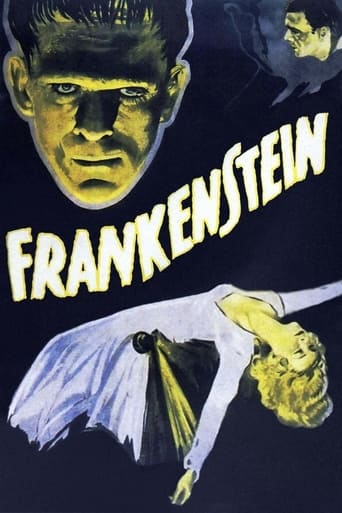El espectáculo de terror original!
"Frankenstein," released in 1931 by Universal Pictures, is a landmark film that has left an indelible mark on the horror genre and popular culture. Directed by James Whale and based on Mary Shelley's iconic novel, the movie introduces audiences to the tragic tale of Dr. Henry Frankenstein, a brilliant but obsessed scientist who seeks to create life from death. The film's haunting atmosphere, combined with its groundbreaking special effects and memorable performances, particularly by Boris Karloff as the Monster, cements its status as a cinematic masterpiece. The eerie setting of the film, with its shadowy castle and stormy nights, perfectly encapsulates the Gothic horror that has become synonymous with the Frankenstein legend. The character of the Monster, portrayed with profound empathy by Boris Karloff, diverges from the novel's narrative by evoking sympathy rather than fear. Karloff's nuanced performance, characterized by his expressive eyes and lumbering gait, transforms the Monster from a mere creature of horror into a misunderstood being yearning for acceptance. This portrayal challenges the audience to reconsider their perceptions of monstrosity and humanity, a theme that resonates deeply even today. The film's iconic scenes, such as the Monster's encounter with the little girl by the lake, have become etched in the annals of film history, illustrating the power of cinema to evoke complex emotions. "Frankenstein" also stands out for its technical achievements, particularly in the realm of special effects. The creation scene, where Dr. Frankenstein brings the Monster to life, is a testament to the ingenuity of early cinema. Using a combination of practical effects and innovative camera work, the film creates a sense of awe and terror that was unprecedented at the time. The meticulous attention to detail, from the laboratory's eerie machinery to the Monster's makeup, showcases the dedication of the filmmakers to their craft. These elements not only enhance the film's narrative but also set a new standard for horror films that followed. In addition to its artistic merits, "Frankenstein" has had a lasting impact on popular culture. The image of the Monster, with his flat head and neck bolts, has become an iconic symbol recognized worldwide. The film spawned numerous sequels and adaptations, influencing countless works in literature, theater, and other media. Its themes of scientific hubris and the ethical implications of playing God continue to be relevant, sparking discussions and debates that transcend the boundaries of the horror genre. "Frankenstein" remains a testament to the enduring power of storytelling and the timeless nature of its cautionary tale.
Año1931
Presupuesto291000$
Duración70 minuto
Ingresos12000000$
GénerosDramaTerrorCiencia ficción
Países de producciónUnited States of America

